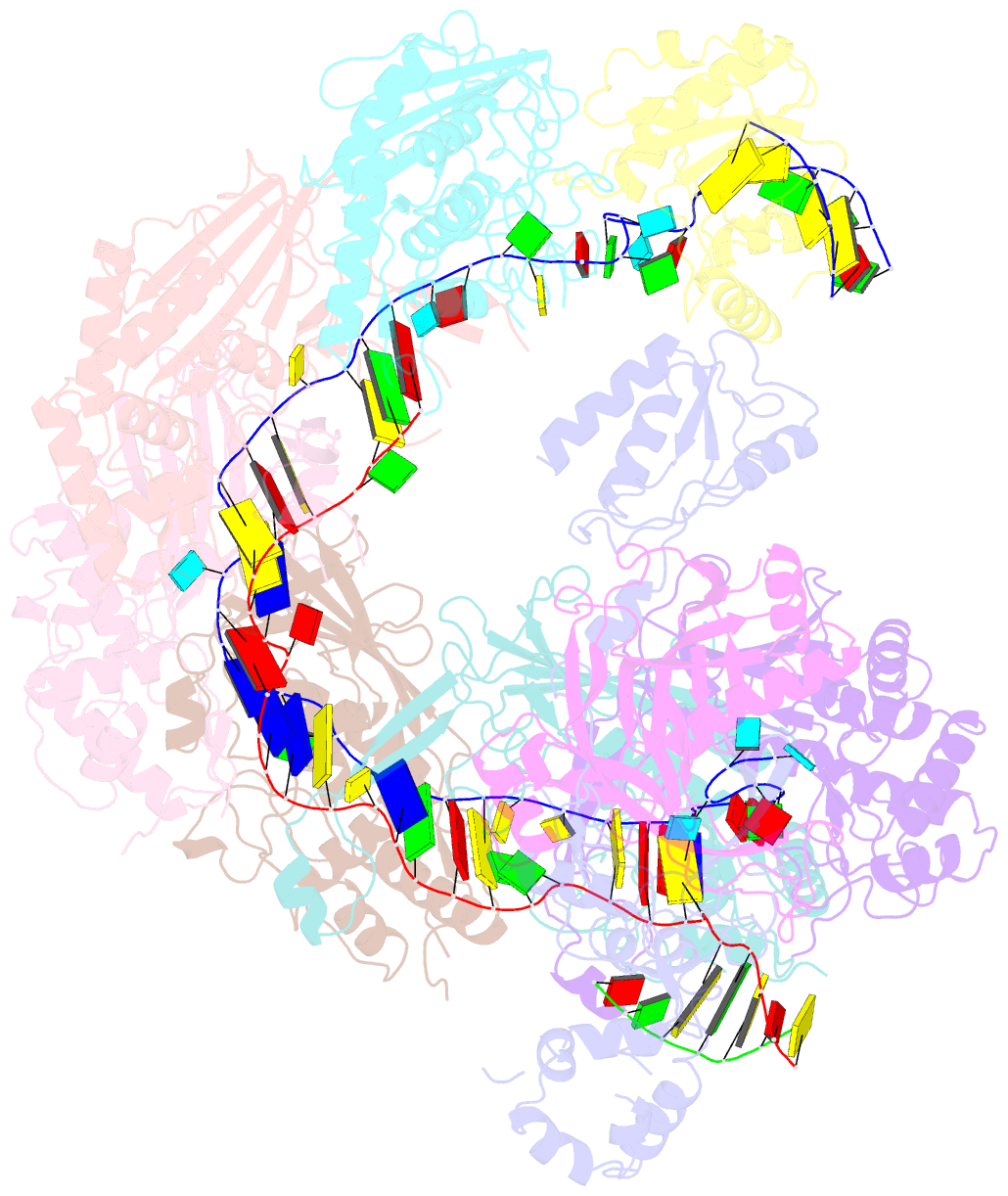Summary information and primary citation
- PDB-id
- 8z0l; SNAP-derived features in text and JSON formats;
DNAproDB
- Class
- antiviral protein-DNA-RNA
- Method
- cryo-EM (2.57 Å)
- Summary
- cryo-EM structure of cas8-hnh system at partial r-loop state
- Reference
- Li X, Liu Y, Han J, Zhang L, Liu Z, Wang L, Zhang S, Zhang Q, Fu P, Yin H, Zhu H, Zhang H (2024): "Structural basis for the type I-F Cas8-HNH system." Embo J., 43, 4656-4667. doi: 10.1038/s44318-024-00229-8.
- Abstract
- The Cas3 nuclease is utilized by canonical type I CRISPR-Cas systems for processive target DNA degradation, while a newly identified type I-F CRISPR variant employs an HNH nuclease domain from the natural fusion Cas8-HNH protein for precise target cleavage both in vitro and in human cells. Here, we report multiple cryo-electron microscopy structures of the type I-F Cas8-HNH system at different functional states. The Cas8-HNH Cascade complex adopts an overall G-shaped architecture, with the HNH domain occupying the C-terminal helical bundle domain (HB) of the Cas8 protein in canonical type I systems. The Linker region connecting Cas8-NTD and HNH domains adopts a rigid conformation and interacts with the Cas7.6 subunit, enabling the HNH domain to be in a functional position. The full R-loop formation displaces the HNH domain away from the Cas6 subunit, thus activating the target DNA cleavage. Importantly, our results demonstrate that precise target cleavage is dictated by a C-terminal helix of the HNH domain. Together, our work not only delineates the structural basis for target recognition and activation of the type I-F Cas8-HNH system, but also guides further developments leveraging this system for precise DNA editing.





